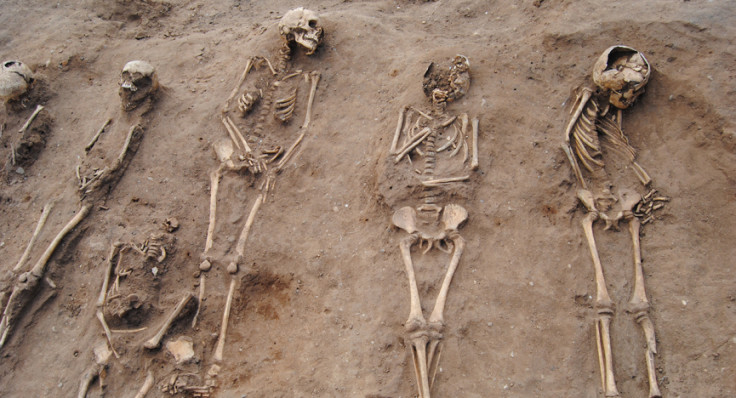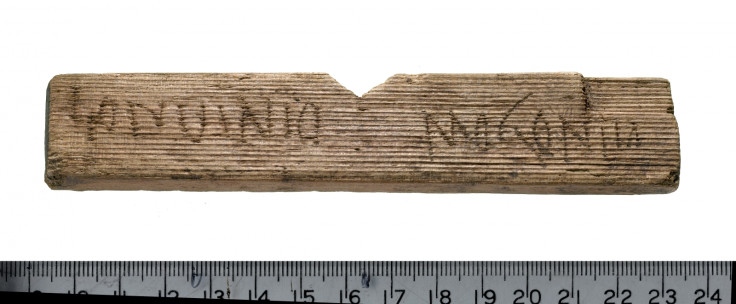Stonehenge's women and Black Death pits: Five amazing archaeological finds in Britain in 2016
This year wasn't all bad – for archaeologists in Britain at least.

This year has been memorable for many reasons – some bad, and some good. But in the world of archaeology, a veritable smorgasbord of discoveries have been unearthed over the last 12 months, allowing us to dig deeper into our history. As 2016 comes to an end, we took a look at some of the most interesting archaeological finds in Britain.
Lindisfarne monastery
An amateur archaeologist stumbled upon an incredible find in Northumberland in July: a rare grave marker from the mid 7th to 8th Century believed to be evidence of Britain's most famous monastery, Lindisfarne.
One of England's earliest Christian monasteries, it was originally founded by in 635AD but was was ransacked by the Vikings around 1,300 years ago. The Lindisfarne monastery is home to one the most beautiful books in Europe, the Lindisfarne Gospels, which incorporates Celtic, Mediterranean and Anglo-Saxon designs and is thought to be dedicated to Saint Cuthbert.
The women of Stonehenge
The origin and purpose of Stonehenge, one of the world's most famous prehistoric monuments, is an enduring mystery – but scientists are gradually finding out more about the rocks. In April, archaeologists discovered the cremated remains of 14 women at the site, revealing more about the status of women in thousands of years ago.
A recent excavation of "Aubrey Hole 7"– one of 56 pits dug outside of the circle of stones – uncovered the bodies of the women, who were buried between 3100 BCE and 2140 BCE. Archaeologists believe anyone buried at the site had a high social status, so the find challenges assumptions about the role of women in neolithic times.
Black Death plague pit
An extremely rare mass grave of plague victims in was discovered at 14th century monastery hospital in Lincolnshire by University of Sheffield archaeologists in November. The 48 skeletons – 27 of which were children – show how the small community was overwhelmed by the Black Death, one of the worst pandemics in human history.

The Black Death, which was most likely bubonic plague, claimed the lives of an estimated 75 to 200 million people across Europe between 1346 and 1353.
One of the archaeologists on the dig, Dr Hugh Willmott, said: "The finding of a previously unknown and completely unexpected mass burial dating to this period in a quiet corner of rural Lincolnshire is thus far unique, and sheds light into the real difficulties faced by a small community ill prepared to face such a devastating threat."
Earliest surviving fresco from Roman Britain
In February, archaeologists at the Museum of London found a wall painting dating back to the late 1st century AD – one of the earliest surviving frescos from Roman Britain.
The painting most likely to have been used to decorate a reception room where guests were entertained. Researchers are now studying the elaborate fresco further to find out more about the fashions and interiors favoured by London's first wealthy citizens.
Oldest handwritten documents
In June, archaeologists discovered the earliest-known handwritten documents in Britain among a haul of more than 400 waxed writing tablets, used by Romans for note-taking. The artefacts were discovered during excavations for Bloomberg's new London-based headquarters and reveal what life was like in the city under Roman rule. Some of the wooden tablets have been deciphered to reveal names, events and business transactions.
Latin expert Roger Tomlin, who translated the tablets, said: "The Bloomberg writing tablets are very important for the early history of Roman Britain, and London in particular. I am so lucky to be the first to read them again, after more than 19 centuries, and to imagine what these people were like, who founded city of London."

© Copyright IBTimes 2025. All rights reserved.





















